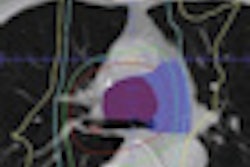
NEW YORK (Reuters Health), Aug 12 - When Finnish researchers were looking for a way to identify kids with urinary tract infection who needed voiding cystourethrography (VCUG), they tested a clinical rule published 10 years ago -- but it didn't work in their patients.
Many children have VCUG after a first urinary tract infection to rule out vesicoureteral reflux (VUR), but the test is uncomfortable and exposes them to ionizing radiation.
Lead author Dr. Mika Venhola of the University of Oulu and colleagues wanted to know whether current guidelines could be revised using a clinical decision rule published in 2000 by Oostenbrink et al in Acta Paediatrica.
The rule uses clinical, biological, and renal ultrasound information to predict which children with a first urinary tract infection are most likely to have grade III-V VUR.
In a retrospective study, the researchers tested the rule by applying it to 347 children younger than 5 years who had imaging studies for VUR after a urinary tract infection.
In the July issue of the Journal of Urology, they report that 120 children (35%) had VUR, including 69 (20%) with grade III-V reflux. VUR was significantly more common in children younger versus older than age 2 (38% vs. 25%, p = 0.03).
While the specificity of the decision rule was 98%, the sensitivity was only 24%.
Ultrasonography findings too did not reliably predict VUR in this population, the authors found.
"The recent guideline recommending a search for VUR cannot be revised using this decision rule," the researchers conclude.
They add, however, that not only is there still no useful clinical decision rule for predicting VUR, but one could even argue "that it is uncertain whether identifying and treating children with VUR confers true clinical benefit."
Two recent meta-analyses found no difference between surgical and medical management for preventing further urinary tract infections and related kidney problems in kids with VUR, they say. And another report showed that treatment for VUR didn't change the rate of end-stage renal disease due to reflux nephropathy in children.
In an editorial comment, Dr. Anthony A. Caldamone at Brown Medical School in Providence, Rhode Island, says the study "raises concerns that recommending ultrasound and VCUG after the first urinary tract infection in children younger than five years may not be appropriate."
He says that perhaps criteria for ordering VCUG should be based on upper tract and bladder status. "Children who have existing renal dysplasia and/or bladder dysfunction are more likely to have breakthrough urinary tract infections as well as a higher likelihood of persistent VUR and further renal damage," Dr. Caldamone said.
Source: http://link.reuters.com/fyp54n
J Urol 2010;184:325-328.
Last Updated: 2010-08-11 18:11:10 -0400 (Reuters Health)
Related Reading
AUA says when to screen families for vesicoureteral reflux, August 6, 2010
DMSA scans not reliable for diagnosing vesicoureteral reflux in infants, August 3, 2010
Copyright © 2010 Reuters Limited. All rights reserved. Republication or redistribution of Reuters content, including by framing or similar means, is expressly prohibited without the prior written consent of Reuters. Reuters shall not be liable for any errors or delays in the content, or for any actions taken in reliance thereon. Reuters and the Reuters sphere logo are registered trademarks and trademarks of the Reuters group of companies around the world.

















